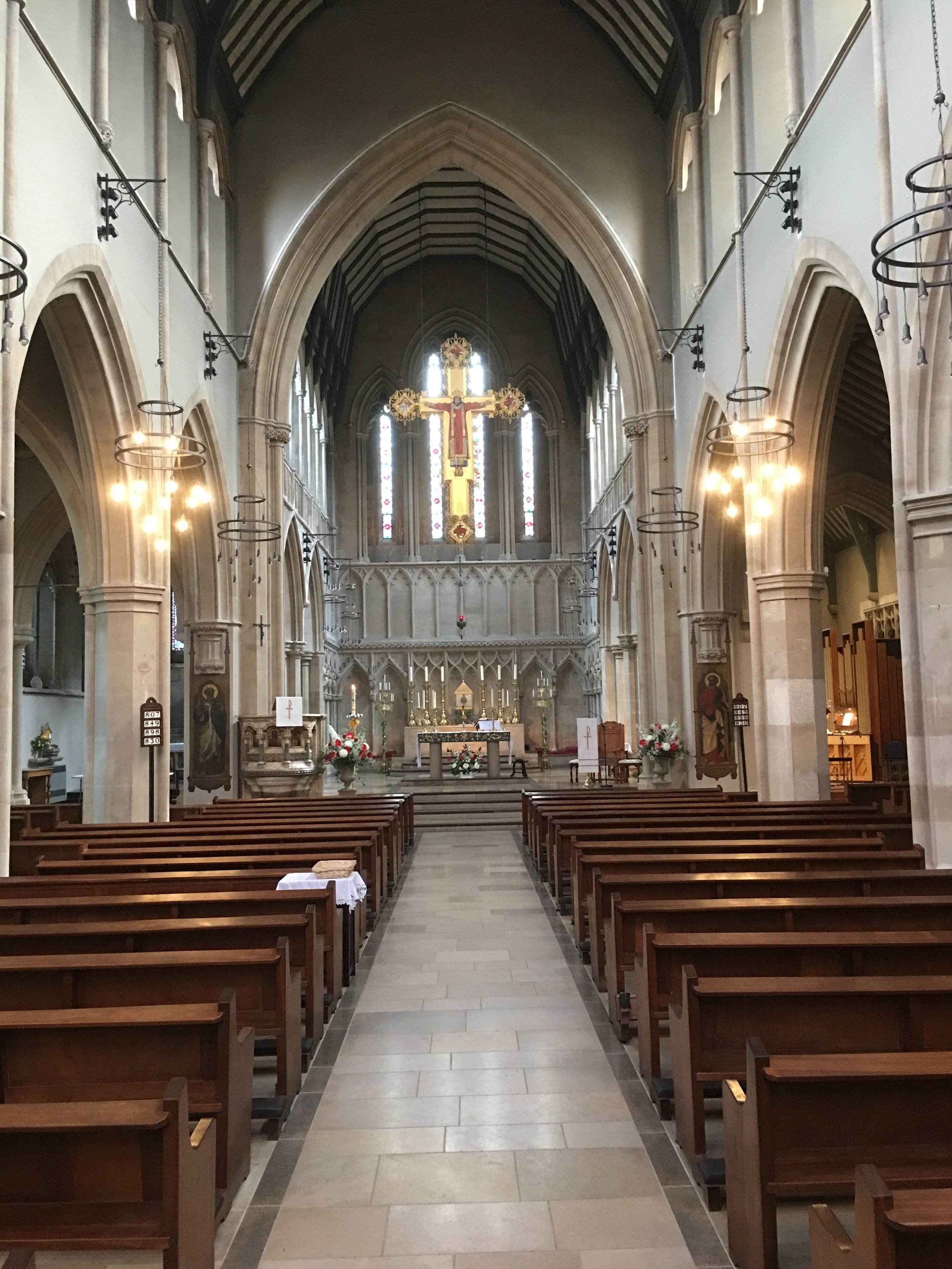The Story of St Mary’s
The origins of St Mary's were close to the present church, on a ninety-nine year leasehold site at 105 Cadogan Gardens (then known as Cadogan Terrace). This is where, in 1812, the first Catholic Chapel in Chelsea, and one of the first in the country since the Reformation, was erected. It had been established by Abbé Jean Voyaux de Franous, who arrived in London in 1793. The Abbé had been given special charge of the spiritual welfare of the veteran soldiers at Chelsey Colledge (now known as the Royal Hospital and the home to the 'Chelsea Pensioners' - so conspicuous by their scarlet uniforms) as well as the soldiers at the Chelsea and Knightsbridge Barracks. He had launched an appeal for funds in England and in France to build the chapel which he intended to be primarily for the use of soldiers and the veterans of the Royal Hospital.
Land
When the Abbé died in 1840 after 40 years of service to his parish, his work was continued by many dedicated people including, especially, Joseph and Mary Knight. They planned a Catholic foundation in the parish and purchased, for £5,000, two and a half acres of land which had formerly been the Wellington Cricket Ground. This is now the Cadogan Street/Draycott Terrace site which contains the current Church together with St Joseph's Primary School, St Thomas More Language College and the St Joseph's Almshouses.
Abbé Jean Voyaux de Franous,Founder of the Parish
Vision
Joseph and Mary Knight’s vision was to establish a church, a convent, schools, almshouses and a cemetery, resembling in some ways a mediaeval conception of parish life. These were mostly built in the 1845-55 period. Land was reserved for the new church, and this munificent gift made Chelsea into one of the most prominent parishes in London. The foundation stone of the present church was laid in 1877, and the church was opened and blessed by Cardinal Manning in May 1879. The new church was designed by John Francis Bentley (1839-1902), an English church architect and decorative designer, mainly for Roman Catholic clients. His chief work was Westminster Cathedral. The church was described as "externally of a very plain character in the severe style of the Early English architecture", but the interior "...presents a bold and lofty appearance".
Features
St Mary's contains many monuments which belonged to the original Chapel, including the high altar and pulpit, which had also been designed by Bentley. The old Cemetery Chapel, now dedicated to Sir Thomas More, was incorporated in the church and also the Blessed Sacrament Chapel, which was designed by Edward Pugin.
Another special feature of the church is the hanging rood which has a figure of Christ, robed and crowned and the symbols of the four Evangelists. There is a sculptured monument to the Abbé and the memorial tablets include one to Madame Tussaud, foundress of the famous wax museum. Oil paintings of Abbé de Franous and also Joseph and Mary Knight hang in the Rectory.
Development
The parish of St Mary's underwent a great change in the 1890s with substantial urban development in the immediate area, an increase in population, and the separation of the central part of Chelsea with the foundation of a new parish. Throughout the years, St Mary's has always served a mixed and ever-changing population, English and non-English, from various walks of life, wealthy and poor - and, of course, the Royal Hospital veterans who now also have their own satellite Roman Catholic chapel in the Royal Hospital grounds.
Another tradition, starting with the Abbé's work, was to make appeals for the relief of the poor - now continued by our St Vincent de Paul's Society.
Over these past years the parish has refurbished the Rectory and the Almshouses. Installed underfloor heating in the church, which is now surmounted by a new floor made of Purbeck stone and commissioned a new lighting system.
Now we need to move into the final phase of development which includes the employment of a lead catechist who will greatly assist in the work of teaching the faith to our young people.
The church badly needs to be redecorated and its stone work needs to be cleaned. Then, finally, we would like to restore the High Altar.



